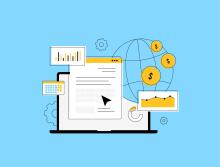Tariffs and Their Impact
Tariffs continue to dominate the news. We’ve outlined our perspective on how tariffs impact the economy, both short and long-term. Tariffs have consequences for both consumers and investors.
It appears as if consumer purchases have spiked in advance of tariff implementation in May and June. This could very well short-term trigger inflation as more demand for products and services tends to drive up prices. The long-term outlook for the economy will be higher prices which could drive down business and consumer spending.
We continue to be cautious and seek to avoid undue risk as we invest assets. There’s too much uncertainty now to be excessively courageous. For the next three months we should be critical as we make judgments about the direction of the economy and markets.
The Chair of the Federal Reserve, Jerome Powell, gave a speech that largely echoed our perspective on the tariff impact on the economy. See excerpt below.
***
Begin quote
“Federal Reserve Chair Jerome Powell expressed concern in a speech Wednesday that the central bank could find itself in a dilemma between controlling inflation and supporting economic growth.
With uncertainty elevated over what impact President Donald Trump’s tariffs will have, the central bank leader said that while he expects higher inflation and lower growth, it’s unclear where the Fed will need to devote greater focus.
“We may find ourselves in the challenging scenario in which our dual-mandate goals are in tension,” Powell said in prepared remarks before the Economic Club of Chicago. “If that were to occur, we would consider how far the economy is from each goal, and the potentially different time horizons over which those respective gaps would be anticipated to close.”
The Fed is tasked with ensuring stable prices and full employment, and economists including those at the Fed see threats to both from the levies. Tariffs essentially act as a tax on imports, though their direct link to inflation historically has been spotty.
In a question-and-answer session after his speech, Powell said tariffs are “likely to move us further away from our goals ... probably for the balance of this year.”
Powell gave no indication on where he sees interest rates headed, but noted that, “For the time being, we are well positioned to wait for greater clarity before considering any adjustments to our policy stance.”
Stocks hit session lows as Powell spoke while Treasury yields turned lower.
In the case of higher inflation, the Fed would keep interest rates steady or even increase them to dampen demand. In the case of slower growth, the Fed might be persuaded to lower interest rates. Powell emphasized the importance to keeping inflation expectations in check.
Markets expect the Fed to start reducing rates again in June and to enact three or four quarter percentage point cuts by the end of 2025, according to the CME Group’s FedWatch gauge.
Fed officials generally consider tariffs to be a one-time hit to prices, but the expansive nature of the Trump duties could alter that trend.
Powell noted that survey- and market-based measures of near-term inflation are on the rise, though the longer-term outlook remains close to the Fed’s 2% goal. The Fed’s key inflation measure is expected to show a rate of 2.6% for March, he said.
“Tariffs are highly likely to generate at least a temporary rise in inflation,” said Powell. “The inflationary effects could also be more persistent. Avoiding that outcome will depend on the size of the effects, on how long it takes for them to pass through fully to prices, and, ultimately, on keeping longer-term inflation expectations well anchored.””
End Quote


